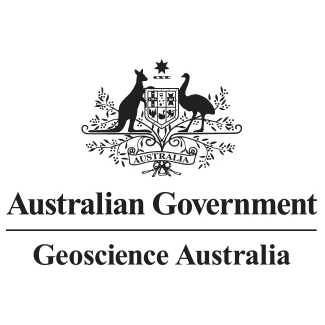Full description
This dataset includes point estimates of groundwater recharge in mm/year. Recharge rates have been estimated at monitoring bore locations in the basaltic aquifers of the Nulla and McBride basalt provinces. Recharge estimates have been calculated using the “chloride mass balance” method. The chloride mass balance process assumes that the chloride ion is a conservative tracer in precipitation, evapotranspiration, recharge and runoff; and that all the chloride is from rainfall, instead of for example halite saturation or dissolution processes. So the volumetric water balance and the flux of chloride balance must both be true. Assuming that runoff and evapotranspiration are negligible (so approximated by zero), the equation is simplified:Water balance P=ET+R+Q
Water balance multiplied by chloride concentrations (chloridefluxbalance)
P∙Cl_ppt=ET∙Cl_ET+R∙Cl_gw+Q∙Cl_riv | ΔCl_reac≈0
Assumptions to simplify equation P∙Cl_ppt=R∙Cl_gw | Q≈0 & ET≈0
Rearranging for recharge rate (unknown) R=P∙(Cl_ppt)/(Cl_gw ) | Q≈0 & ET≈0
Where P = precipitation rate; ET = evapotranspiration rate; R = recharge rate; Q = runoff to streams; Clppt = concentration of Cl in precipitation; ClET = concentration of chloride in evapotranspiration; Clgw = concentration of Cl in groundwater; Clriv = concentration of chloride in river runoff; ΔClreac = change in chloride concentrations from reactions.
Lineage
Maintenance and Update Frequency: asNeededRainfall values were correlated to these locations from the raster grid of annual median rainfall values, for the period 1901-2017, as calculated by CSIRO (rf_ave_annual_UB_median_CSIRO_1901_2017 raster).
Chloride concentrations were taken from hydrochemical sampling within the Upper Burdekin project, and joined to bores (GW_Report_20191217_Cl_joinToBores). Where multiple samples had been obtained, the average concentration in groundwater has been used.
Rainfall chloride values are calculated from rainwater sampling conducted within the Upper Burdekin project. This had one location in each province; however multiple samples over time were obtained. Both the minimum and average values over time have been used, for the rainwater sampling location within the same basalt province as the bore (i.e. equivalent to being spatially the closest).
The chloride mass balance approach assumes that chloride is a conservative tracer derived entirely from precipitation. Furthermore, the method used assumes that runoff and evapotranspiration are negligible (so approximated by zero). As such, calculating the recharge estimate is done by multiplying the rainfall rate by the chloride concentration of rainwater and dividing by the chloride concentration in groundwater. Both the estimate using average and minimum rainwater concentrations are presented. Recharge rate values are presented in mm/yr.
Notes
PurposeThis dataset presents recharge rate estimates for borehole (point) locations in in the Nulla and McBride basalt provinces of the Upper Burdekin region, as estimated through the Chloride Mass Balance approach. Using rainfall rates, rainfall chemistry and groundwater chemistry, the recharge rates can be estimated through the Chloride Mass Balance approach. Recharge is the process by which water enters the groundwater system, so understanding the rate of recharge assists with understanding the inputs to the groundwater system.
Issued: 25 05 2020
text: westlimit=143.50; southlimit=-20.30; eastlimit=145.30; northlimit=-17.70; projection=GDA94 (EPSG:4283)
User Contributed Tags
Login to tag this record with meaningful keywords to make it easier to discover
ESRI File Geodatabase (zip) [31kb]
uri :
https://d28rz98at9flks.cloudfront.net/133822/133822_00_1.zip![]()
Upper Burdekin Chloride Mass Balance Recharge MapServer
uri :
https://services.ga.gov.au/gis/rest/services/UpperBurdekinChlorideMassBalanceRecharge/MapServer![]()
Upper Burdekin Chloride Mass Balance Recharge WMS
uri :
https://services.ga.gov.au/gis/services/UpperBurdekinChlorideMassBalanceRecharge/MapServer/WMSServer![]()
Upper Burdekin Chloride Mass Balance Recharge MapServer
local : 135802
Upper Burdekin Chloride Mass Balance Recharge WMS
local : 135809
- DOI : 10.26186/133822

- Local : pid.geoscience.gov.au/dataset/ga/133822
- global : f82b311f-e531-47ff-aaa2-2f259b13ab5a


